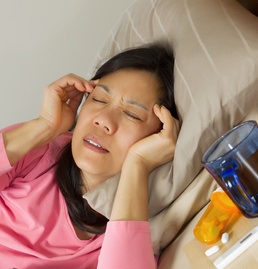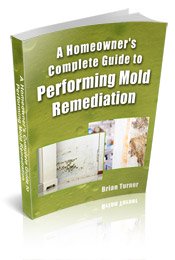Find a Mold Specialist Now
Click or Call, Toll-Free 24/7
Dangers of Mold
You may be surprised to learn about the many dangers of mold in your home. Symptoms of exposure to mold include many health problems; it’s not just something that’s difficult to scrub off your shower tiles or something that smells musty. The dangers from mold are greater for small children, elderly people, people with respiratory disorders and people with compromised immune systems. However, even healthy adults can be negatively affected by symptoms of exposure to mold, especially large amounts of mold. Even moderate amounts of mold can cause symptoms in some people, though.

Symptoms of mold exposure include a number of respiratory symptoms, because mold spores are often air borne and inhaled. Some of the respiratory symptoms of exposure to mold include coughing, sneezing, lung congestion, runny nose, asthma attacks in those with asthma and asthma-like symptoms in people that don’t have asthma (or that have never had it before). People may also have other hay fever-like symptoms such as watery, itchy eyes and a sore throat.
Unfortunately, the dangers of mold are not limited to respiratory symptoms. People may suffer depression, fatigue, nausea, headaches and even skin rashes. People may also be more susceptible to opportunistic infections, especially people with respiratory or immune system disorders. Opportunistic infections include things like pneumonia and other lung infections.
Removing Household Mold
The only way to really relieve the symptoms of exposure to mold is to actually remove the household mold. Allergy medicines and analgesics will be of limited effectiveness as long as the mold remains in the home.
We suggest calling in a professional to test your home for mold if you think you may have a mold problem. And if the test is positive, we recommend having a professional remove the mold since he or she will know how to do it safely, avoiding the dangers of mold that you face while cleaning it up.
One reason for calling in a professional is that he or she will have all the necessary safety equipment: N-95 respirator masks, rubber gloves, goggles, air scrubbers, negative air machines, large sheets of plastic and duct tape for blocking off rooms where he or she is working, etc. If you decide to handle the cleanup yourself, make sure you take all necessary safety precautions. The dangers of mold spores are significant during the cleanup process if the proper safety precautions are not taken because the cleanup process causes spores to go airborne and they can easily be inhaled as well as spread to other areas.
If you decide to attempt to clean up the mold in your house by yourself, you should purchase a biocide designed for that purpose. Regular household cleaners may not do the job. Some people try to clean up mold with bleach and water but a biocide meant to clean up mold works better and is safer. Wear protective gear at all times so you don’t inhale mold spores and develop more severe respiratory systems.
Don’t underestimate the dangers of exposure to mold. Take all possible steps to protect yourself during the cleanup process.
After taking all possible steps to clean up the mold in your house, have a professional test the air to make sure it’s free of mold spores. There are home tests available but these are not as reliable as professional tests. It’s extremely important to make sure all the mold has been removed from the home. Even if you choose to handle the cleanup yourself, have a professional test the air to make sure all mold has been removed when you’ve finished the cleanup.
When to Contact a Professional about Removing Household Mold
We recommend contacting a professional mold remover if:
- Mold covers a large surface area in your home.
- You think there is mold growing in your HVAC ducts.
- You don’t know if you’ve found all areas of mold in your home.
- You notice a musty smell in your home but don’t see any mold anywhere.
- You have health problems that make it unadvisable for you to clean up mold yourself, such as breathing problems or immune system problems.
Most mold removal professionals provide consultations free of charge, so even if you want to handle the mold removal on your own, take advantage of the opportunity to get some free information and advice. To find Mold Removal Professionals in your area, just follow the link.
Return From Dangers Of Mold To Our Symptoms Of Toxic Mold Exposure Page
Black Mold Health Symptoms Home Page





